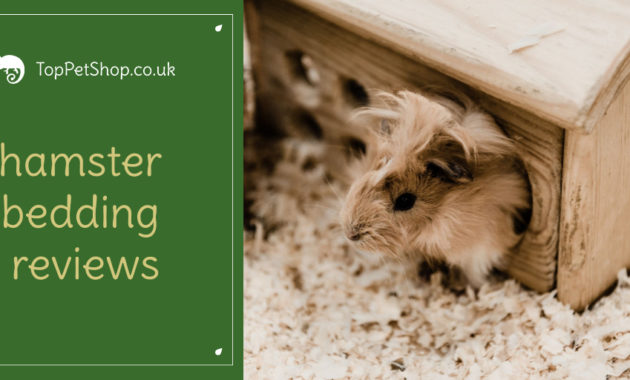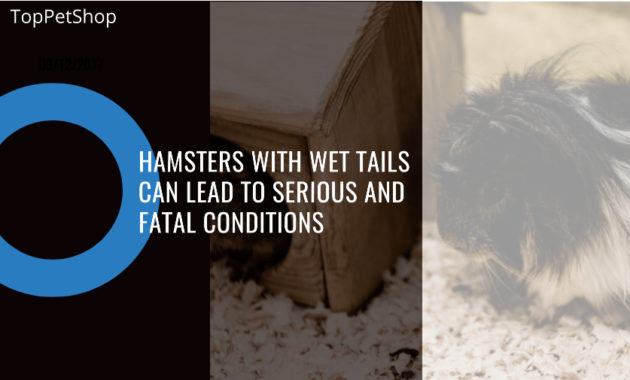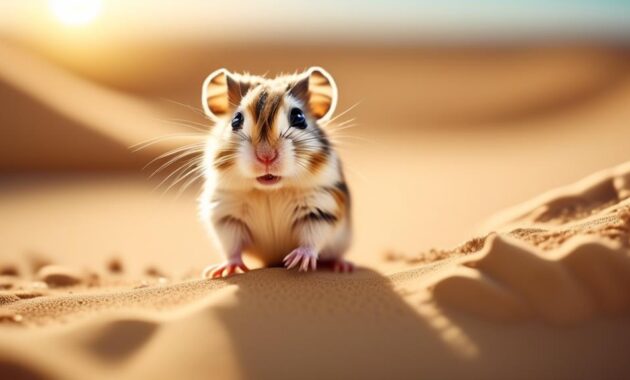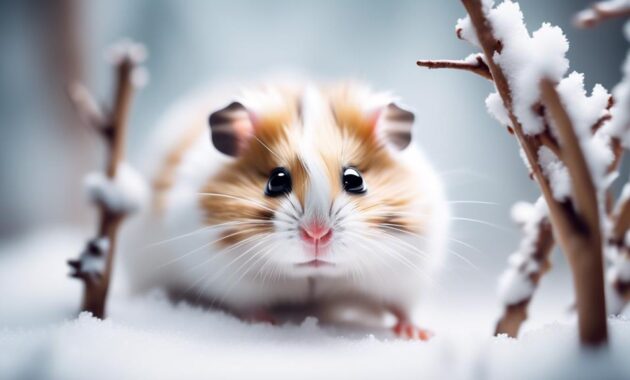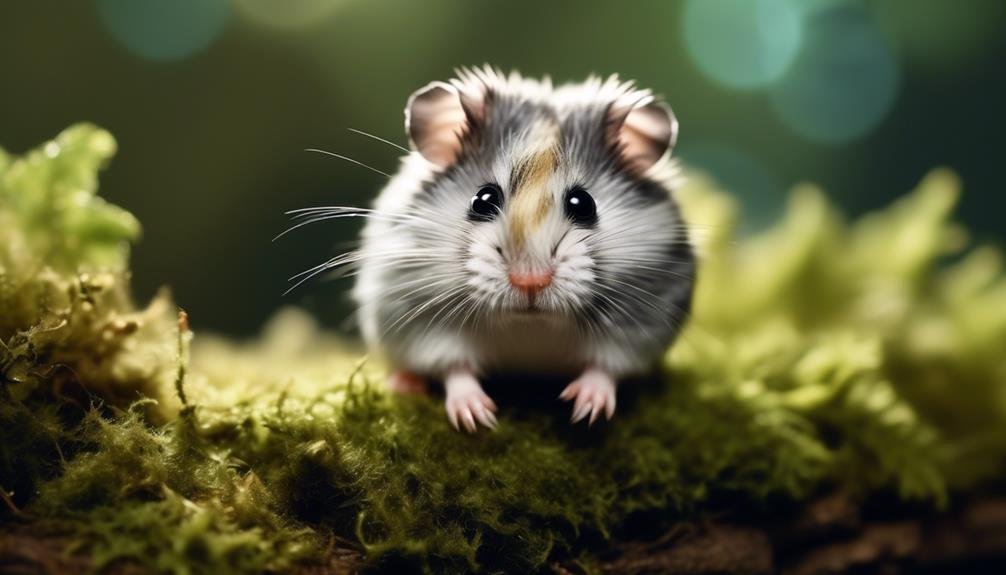
The Campbell’s Dwarf Hamster, a species both fascinating and endangered, captivates the attention of researchers and conservationists alike. This small rodent, found in the central regions of Asia, possesses unique characteristics that set it apart from its close relatives.
However, its survival is threatened by various factors, including habitat destruction and the reduction of vital resources.
As we delve into the world of the Campbell’s Dwarf Hamster, we will uncover the intricate details of its taxonomy, physical attributes, and crucial aspects of its conservation.
Prepare to be amazed by the captivating journey that lies ahead.
Key Takeaways
- Campbell’s Dwarf Hamster, also known as Phodopus campbelli, is a small rodent species native to central Asia, including the Altai mountains, Tuva, and Hebei province in China.
- This species is often confused with the Djungarian hamster due to similar common names, but they can be distinguished by their smaller ears and the absence of a dark patch on the crown.
- Campbell’s Dwarf Hamsters have a varied diet, including commercially available hamster food, fresh vegetables and fruits, dark greens, and wild vegetables. They also need to gnaw regularly on nontoxic wood to prevent their teeth from overgrowing.
- While the IUCN lists Campbell’s Dwarf Hamster as Least Concern, there are some minor concerns for their conservation, such as the destruction of burrows due to increasing livestock and a reduction in water sources in arid areas. Conservation efforts are in place in protected areas.
Taxonomy and Naming
The taxonomy and naming of the Campbell’s dwarf hamster, scientifically known as Phodopus campbelli, provide insight into the origins and classification of this fascinating and endangered species.
The binomial name, Phodopus campbelli, was assigned to the hamster as the type species of Cricetiscus, which is now considered a synonym of Phodopus. The hamster was named after C. W. Campbell, who collected the first specimen in Mongolia.
Commonly referred to as the striped hairy-footed hamster, Djungarian hamster, Siberian hamster, or Campbells hamster, it is often confused with the Djungarian hamster due to similar common names.
Understanding the taxonomy and naming of the Campbell’s dwarf hamster is essential for accurate identification and conservation efforts for this endangered species.
Description and Physical Characteristics
With its distinct physical features and unique characteristics, the Campbell’s dwarf hamster is a captivating and endangered species. Here are its key physical characteristics:
- Size and Coloration:
- The size of the Campbell’s dwarf hamster varies depending on its location.
- It has white fur on its lips and cheeks.
- A dark dorsal stripe runs along its back, providing camouflage in its natural habitat.
- Scent-marking and Distinguishing Features:
- Campbell’s dwarf hamsters use their Harderian glands for scent-marking.
- They have smaller ears and lack a dark patch on the crown, distinguishing them from Djungarian hamsters.
- Lifespan and Teeth:
- In captivity, Campbell’s dwarf hamsters live for around 2.0-2.5 years.
- Their teeth never stop growing, so they regularly gnaw on suitable materials to prevent pain and irritation.
These physical characteristics contribute to the unique appearance and behavior of the Campbell’s dwarf hamster, making it an intriguing species to study and conserve.
Lifespan and Dietary Needs
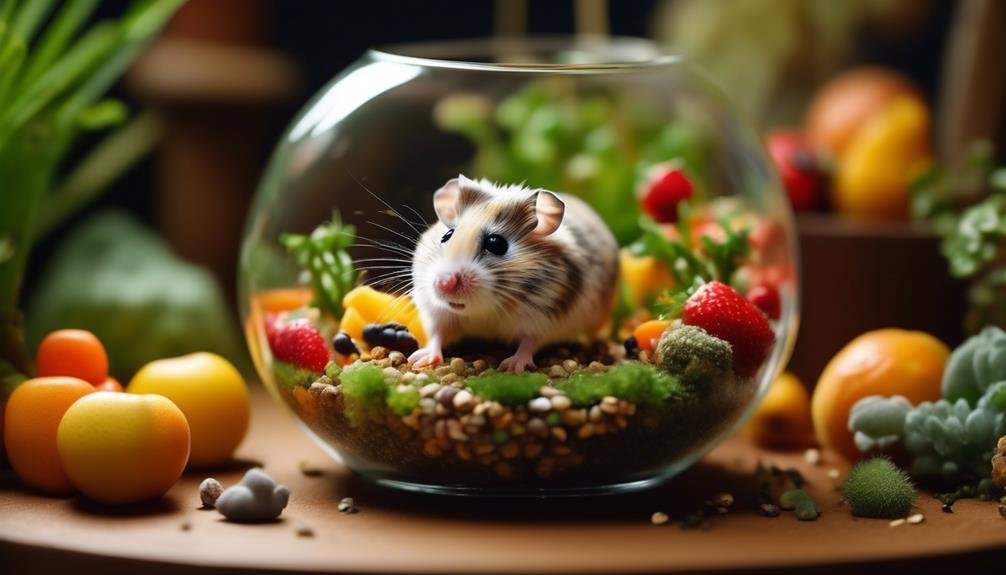
What factors contribute to the lifespan and dietary needs of the Campbell’s dwarf hamster?
The lifespan of captive Campbell’s dwarf hamsters is typically around 2.0-2.5 years. Their life expectancy in captivity is greater than in the wild, which can be attributed to a more controlled and consistent diet.
These hamsters are omnivorous and require a balanced diet consisting of 16-24% protein, 60-65% carbohydrates, and 5-7% fat. In their natural habitats, they consume plant materials along with other food sources.
Commercially available hamster food is designed to meet their nutritional needs, but fresh vegetables, fruits, dark greens, and wild vegetables can also be provided. It is important to note that Campbell’s dwarf hamsters’ teeth constantly grow, so they need to gnaw on nontoxic wood regularly to prevent dental issues.
Breeding and Hybridization
Factors influencing the breeding and hybridization of Campbell’s dwarf hamster can shed light on the reproductive behaviors and potential threats to the species. Understanding these factors is crucial for the conservation and management of this endangered species. Here are three key points to consider:
- Breeding seasons:
In the wild, breeding occurs during April in Tuva and Mongolia, while in captivity, it can happen throughout the year. The number of litters produced per year varies, with an average of eight offspring per litter in the wild. In captivity, females can have between one and 18 litters per year.
- Hybridization risks:
Campbell’s dwarf hamsters can interbreed with Djungarian hamsters, resulting in live offspring. However, breeding hybrids and cloning can lead to health problems due to inherited diseases. Furthermore, hybridization poses a threat to the existence of pure species and subspecies.
- Fertility and chromosomes:
Both Campbell’s dwarf hamsters and Djungarian hamsters have the same number of chromosomes, but there are structural differences. Sterile hybrid offspring are produced, and their fertility decreases depending on the parent types.
Understanding these aspects of breeding and hybridization is crucial for implementing effective conservation measures to safeguard the future of Campbell’s dwarf hamster.
Distribution, Habitat, and Conservation Status
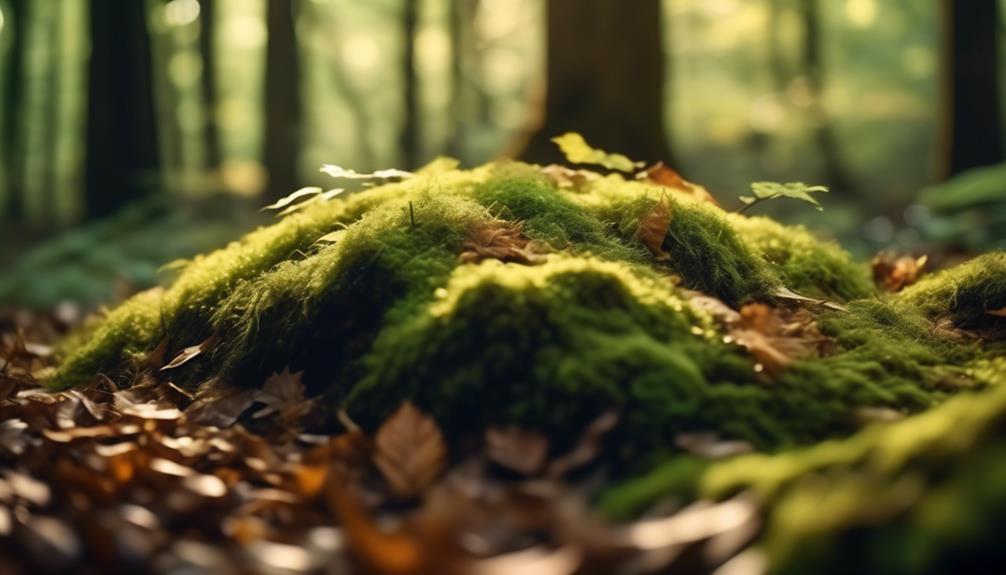
Campbell’s dwarf hamster, a fascinating and endangered species, can be found inhabiting burrows in central Asia, specifically in the Altai mountains, Tuva, and Hebei province in China. These burrows can contain four to six tunnels, with nesting areas up to 1m deep. The hamsters line their burrows with dry grass or sheeps wool.
In some areas, they may share burrows with Daurian pikas, and in Tuva, they live with other hamster species to avoid fighting over food. Currently, Campbell’s dwarf hamster is listed as Least Concern by the IUCN. The population and distribution size are large, with no major threats. However, there is a small risk of some burrows being destroyed due to increasing livestock, and a minor concern regarding the reduction of water sources in arid areas.
Conservation efforts are in place in protected areas to ensure the species’ survival.
Frequently Asked Questions
What Is the Average Size of a Campbell’s Dwarf Hamster in Different Locations?
The average size of Campbell’s dwarf hamster varies depending on location. However, they generally have white fur on their lips and cheeks, a dark dorsal stripe along the back, and smaller ears compared to the Djungarian hamster.
Do Campbell’s Dwarf Hamsters Have Any Specific Behaviors or Habits Related to Scent-Marking?
Campbell’s dwarf hamsters exhibit scent-marking behaviors, utilizing their Harderian glands to leave scent trails. This behavior is important for communication and territorial marking. They distinguish themselves from other hamster species through this unique habit.
Can Campbell’s Dwarf Hamsters Safely Eat Commercially Available Hamster Food as Their Main Source of Nutrition?
Campbell’s dwarf hamsters can safely eat commercially available hamster food as their main source of nutrition. However, it is important to supplement their diet with fresh vegetables, fruits, and dark greens to ensure a balanced and varied diet.
How Often Do Campbell’s Dwarf Hamsters Need to Gnaw on Objects to Maintain Healthy Teeth?
Campbell’s dwarf hamsters need to gnaw on objects regularly to maintain healthy teeth. They have continuously growing incisors, so gnawing helps prevent pain and irritation. Nontoxic wooden chews and smooth young wood from trees like apple and willow are commonly used for this purpose.
Are There Any Potential Threats to the Population and Distribution of Campbell’s Dwarf Hamsters?
There are potential threats to the population and distribution of Campbell’s dwarf hamsters, such as destruction of burrows due to increasing livestock and reduction in water sources in arid areas. Conservation efforts are in place to mitigate these risks.
Are Campbell’s Dwarf Hamsters and Rare Chinese Hamsters Related Species?
Campbell’s Dwarf Hamsters and rare Chinese hamsters are not closely related species. While they are both part of the hamster family, they have distinct genetic differences. However, one thing they do have in common is the fascinating habits of Chinese hamsters, which make them a popular choice for pet owners.
Conclusion
In conclusion, Campbell’s Dwarf Hamster is a captivating and endangered species that inhabits central regions of Asia.
Despite its small size, this species plays a significant role in its ecosystem by constructing intricate burrows and sharing resources with other species.
However, the destruction of their burrows and reduction of water sources pose a threat to their survival.
Conservation efforts are crucial to ensure the continued existence of this remarkable species.

